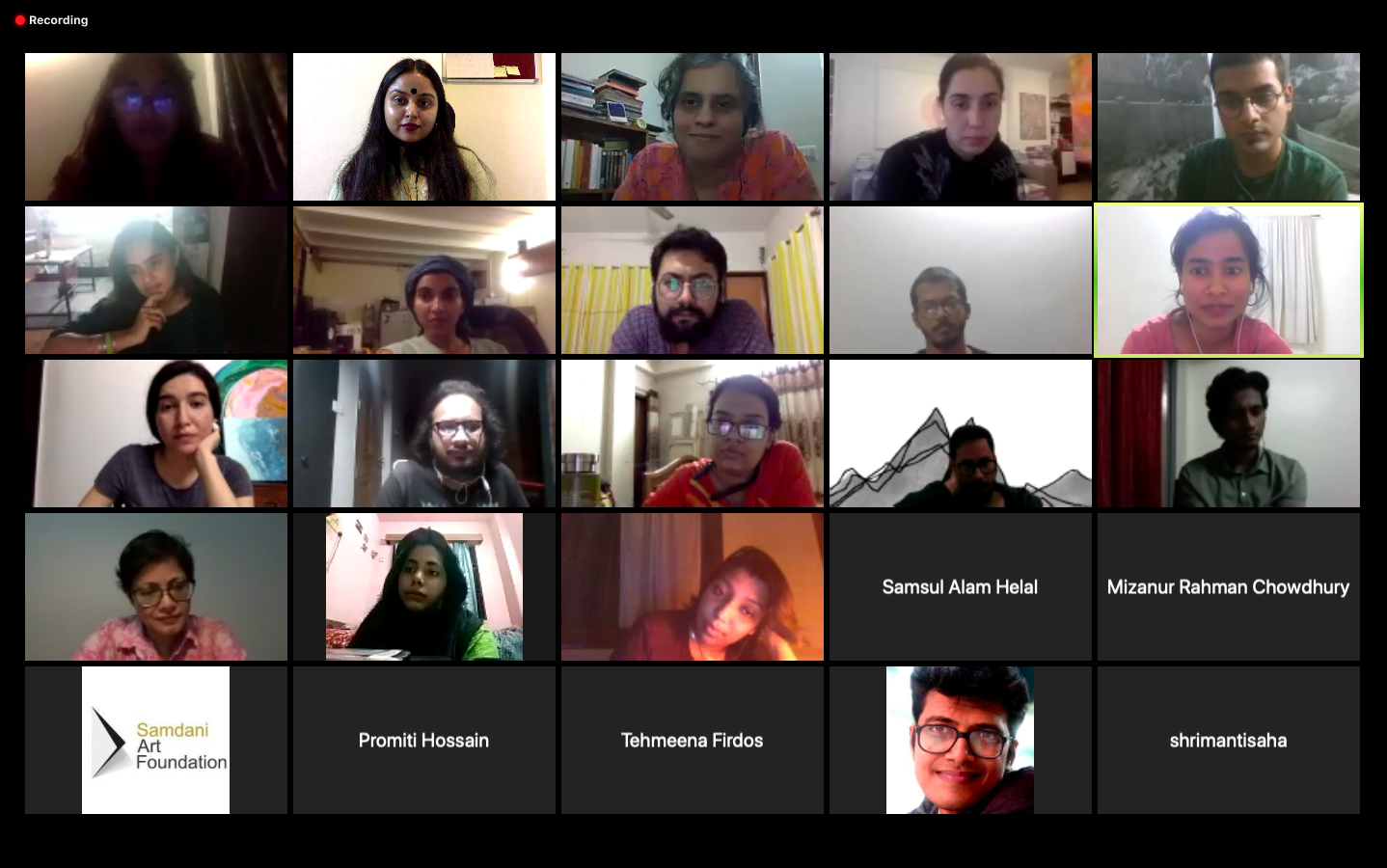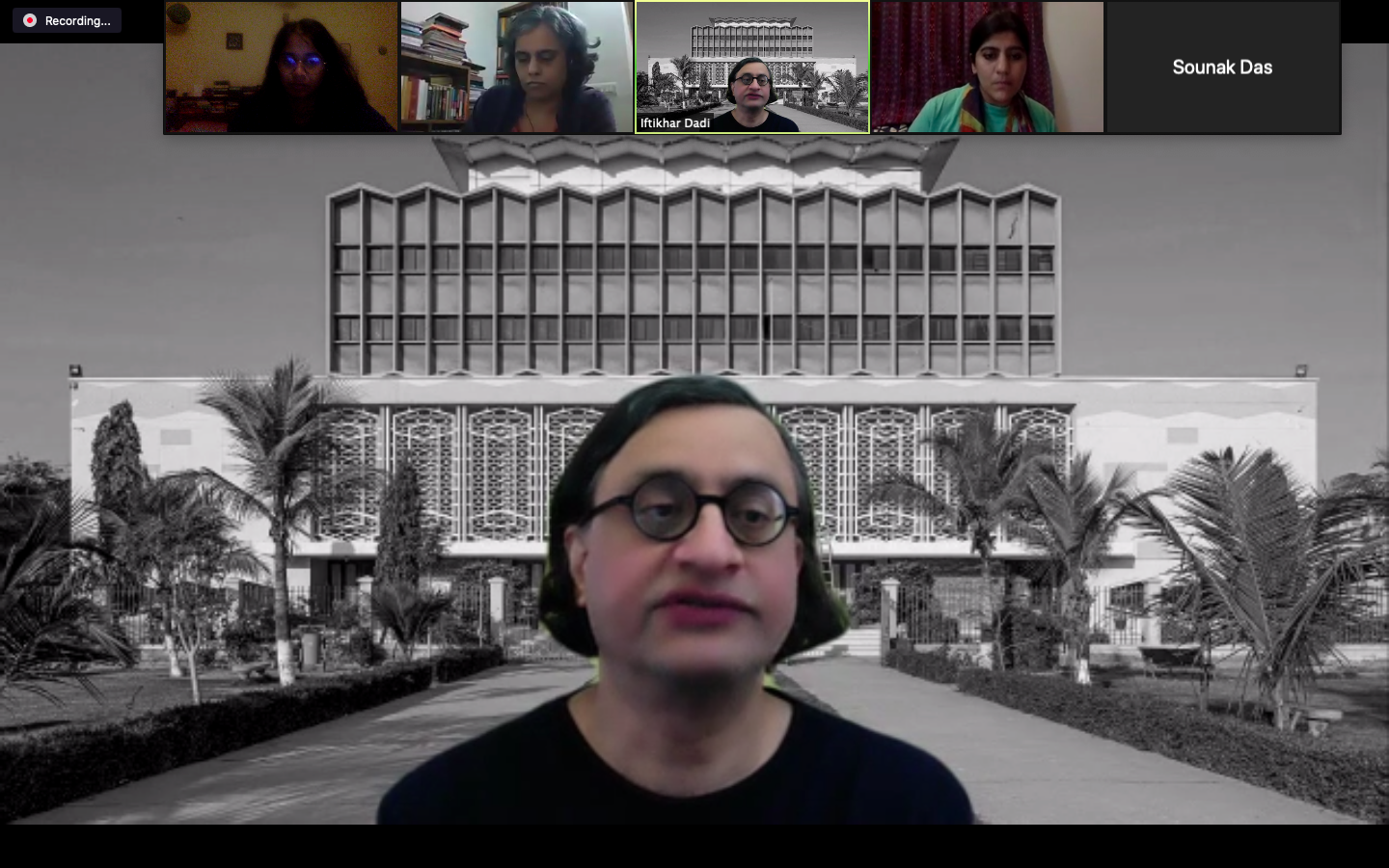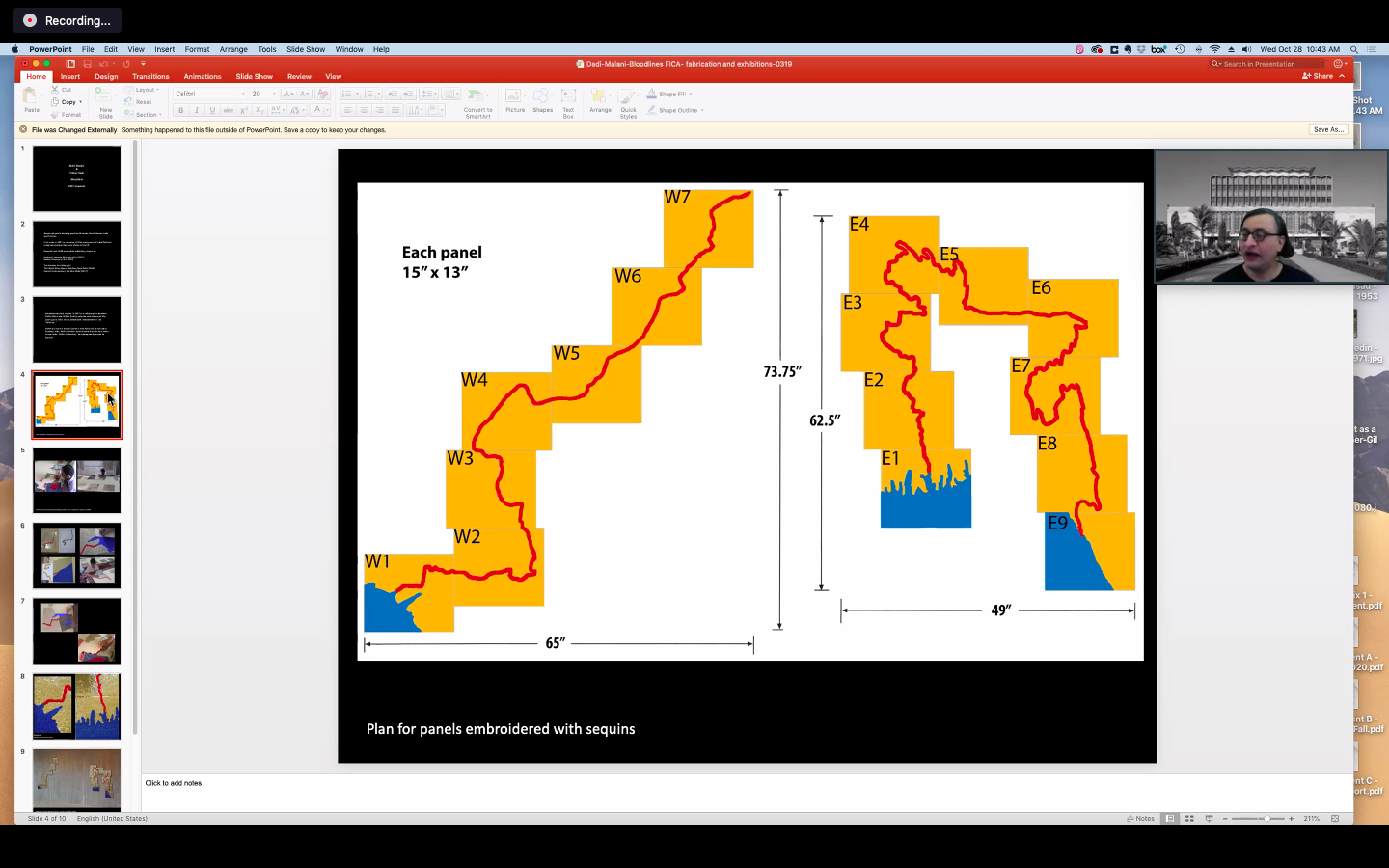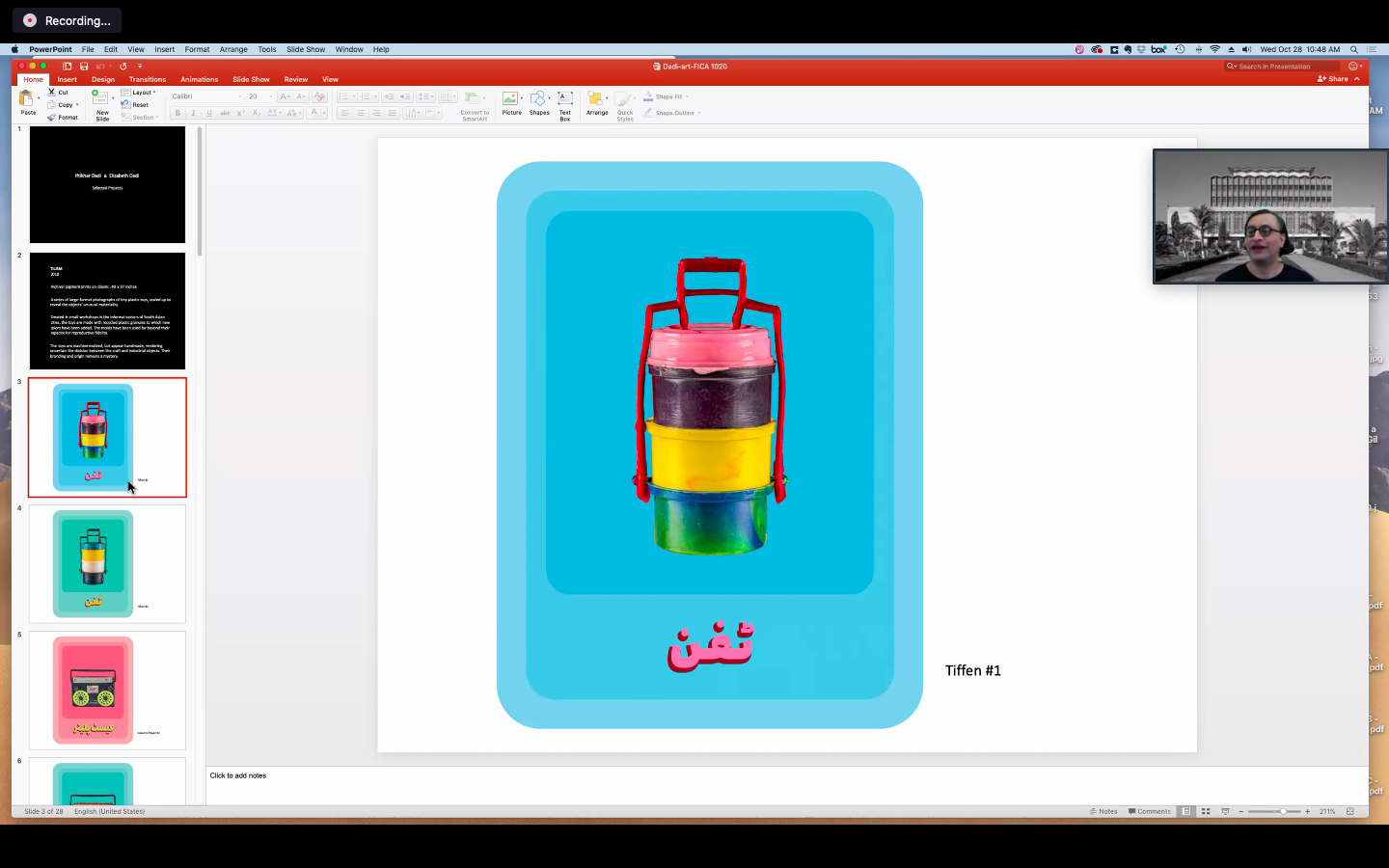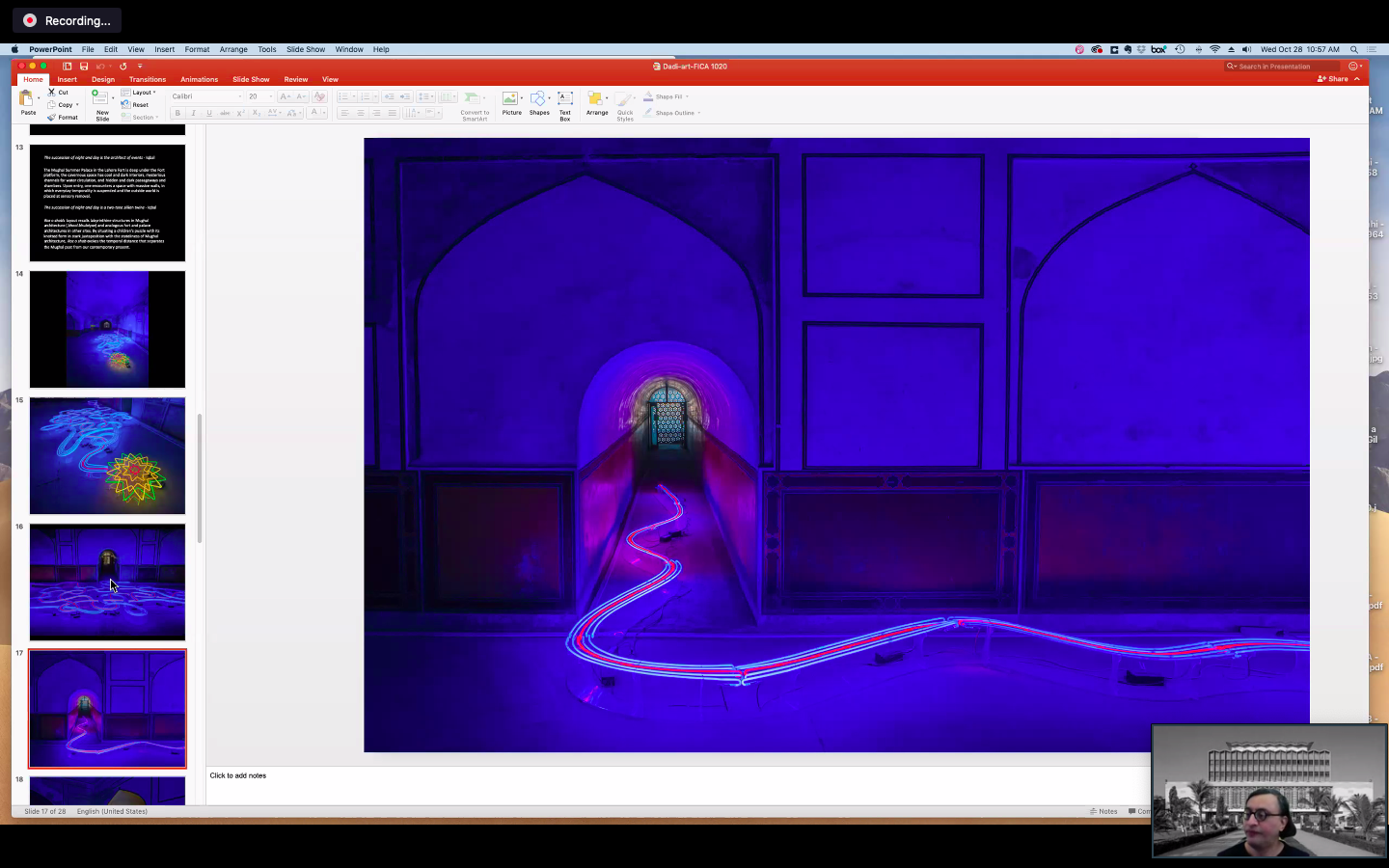Announcing the Recipients
The Foundation for Indian Contemporary Art (FICA) and Samdani Art Foundation (SAF) are delighted to announce that Stitching Screens, a new grant instituted for supporting artistic collaboration across India, Bangladesh and the digital space, is awarded to Amol K Patil and Ashfika Rahman for their proposed project 'A time comes when we hear nothing'.
The process for this grant started in October 2020 when FICA and SAF invited a group of 22 artists (under the age of 40 based in India and Bangladesh), to propose collaborative works with an Indian/Bangladeshi counterpoint, whether image-based, film, sound, gaming, digital and/or new media, among others, that harness the facets of digital transmission systems to co-create a work across the borders. Through a two month-long process and interactions, the invited artists conversed and found commonalities between practices and ultimately submitted joint proposals.
In December our jury of six consisting of Shanay Jhaveri, Assistant Curator, International Modern and Contemporary Art, Metropolitan Museum of Art, Daniel Baumann, Curator and Director, Kunsthalle Zurich, Shilpa Gupta, artist and Munem Wasif, artist, Diana Campbell Betancourt, Founding Artistic Director, Samdani Art Foundation and Vidya Shivadas, FICA Director came together to look through the proposals submitted.
The jury responded to the different potentialities expressed in the various proposals. They appreciated how they were grounded in making visible the experimentation and processual nature of the collaboration and communication.
The jury unanimously chose the proposal submitted by Amol K Patil and Ashfika Rahman titled 'A time comes when we hear nothing'. The project proposes a series of artistic exchanges around the collective experience of social stratification made even more evident during the Pandemic, with reference to the plight of the migrant labourer on one hand, and the effects of the lockdown on those stranded at home on the other.
The project seeks to explore a multitude of voices, registers, and performances that emerge from a cross connection between the locations of the two artists, from Dhaka, Bangladesh to Mumbai, India. Taking the socio-economic and physical realities that have come into place due to the Global Pandemic, there emerge experiences of the labourers who had to walk hundreds of kilometres home and that of those locked within their homes. This project seeks to harness and assess the current sense of precariousness that is a global condition yet frayed further across strata of society, including political polarisations that are occurring on a global scale. The project will explore different strands mapping time and distance, incorporating elements of fiction and performance, as well as socio-cultural signs of symbolic and historical value, and public contributions to the project in the form of responses.
On behalf of both organisations and the jury members, we extend our heartiest congratulations, and look forward to seeing their project develop in the coming months.
About the Artists
Amol K. Patil (b. 1987), is an artist working and experimenting with various mediums. His artwork, is an ever reaching attempt to recapture the vibrating movement and sound of the ‘chawl’ architecture. As Zasha Colah writes, “A form of social housing for mill and factory workers built in the early 1900s, with many tenements fit together, verandahs connecting every door, the gossiping voices from dimly lit tables under which men gather to play carom, the man with a walking stick, the sound of termites eating into wood, wedding festivities, and rhythmically creaking beds”. Patil has shown at Yokohama Triennale, 2020 in Japan, Goethe-Institut / Max Mueller Bhavan, Mumbai 2019, Goethe-Institut / Max Mueller Bhavan, New Delhi 2019, The Showroom 2018, Tensta Konsthall 2017, Pompidou 2017, Pune Biennale Habit-co Habit 2017, New Galerie in Paris 2016, Dakar Biennale, 2016, Myymälä2,Helsinki, 2015; Japan Foundation, Delhi, 2015; Stedelijk Museum in Amsterdam 2014, International Artists Initiated, Glasgow, 2014; Video Art Festival, Lagos, 2014; Para Site, Hong Kong, 2014; Kadist Art Foundation, Paris, 2013.
Ashfika Rahman was born in Dhaka, Bangladesh. Her practice straddles art and documentary, drawing inspiration from 19th century prints which she re-contextualizes using contemporary media. Photography is the predominant medium through which she expresses her views on complex systemic social issues. In her practice she initiates to document the time and challenge the stereotypes of looking at victims, especially at the minors.
Rahman studied photography in Hochschule Hannover, Germany and received a professional degree in Documentary Photography from Pathshala (South Asian Media Academy). Later on she joined Pathshala (South Asian Media Academy) as faculty member. She received Joop Swart Masterclass by World Press in 2018. She joined MAPS images as a member. She exhibited her work in several galleries and festivals including “Princesses-des-villes” at Palais de Tokyo (Paris, France), F3– Freiraum for Fotografie 2020 (Germany) , Dhaka Art Summit 2020 (Dhaka, Bangladesh), Lumix Festival 2020 ( Germany), ‘Catalyst’ jimei x arles international photo festival 2019 (China), “Fabric(ated) Fractures” Alserkal Avenue 2019 (Dubai), “Women in Photography Exhibition” at Objectifs (Singapore), “Chobi Mela X” International Photography Festival 2019 (Dhaka, Bangladesh), Lumix Festival 2018( Hannover, Germany), Indian Photo Festival 2018 (IPF) (Hyderabad, India), Dhaka Art Summit 2018 (Dhaka, Bangladesh).
On the Collaboration with Samdani Art Foundation
As our current moment has forced us to think about our common humanity, FICA has had the timely opportunity to collaborate with Samdani Art Foundation to offer artists from India and Bangladesh an opportunity to work across borders, activating the digital universe through artistic exchange. As a collaborative platform, Stitching Screens: Supporting Artistic Collaboration across India, Bangladesh, and digital space is looking at art as a coming together, a productive capacity of seeking connections, discords, and new initiations.
We invited 22 Indian and Bangladeshi artists to explore artistic exchanges that enliven and activate the digital universe, countering the current imposition of physical distancing and disconnect. They were to propose collaborative works with an Indian/Bangladeshi counterpoint, whether image-based, film, sound, gaming, digital and/or new media, among others, that harness the facets of digital transmission systems to co-create a work across the borders of India and Bangladesh that is meant to circulate in South Asia and wider in the international art world.
The first phase of the grant included two interactive sessions (27 and 28 October) with the 22 practitioners from Bangladesh and India. On the first day, they shared their work and instigated thinking around collaborative modes of making across digital media. We were very pleased to host Iftikhar Dadi for the second session with the participants, where he spoke of his own art-making practice with partner Elizabeth Dadi, and his work with Nalini Malani, titled Bloodlines. As part of the larger discussion on collaborative practices in art, he highlighted several artist groups from around the world that had worked on collaborative projects together.




